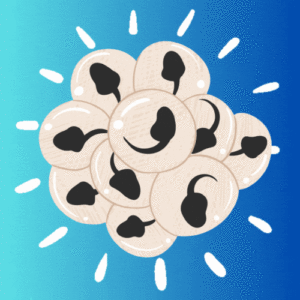
We use very young tadpoles of the South African Clawed toad or frog (Xenopus) to study how brains work. Our research is supported by multiple funding bodies, including grants from the Biotechnology and Biological Sciences Research Council (BBSRC), the Wellcome Trust, and the Royal Society.
Read on to meet the scientists and explore the lab.
The Laboratory
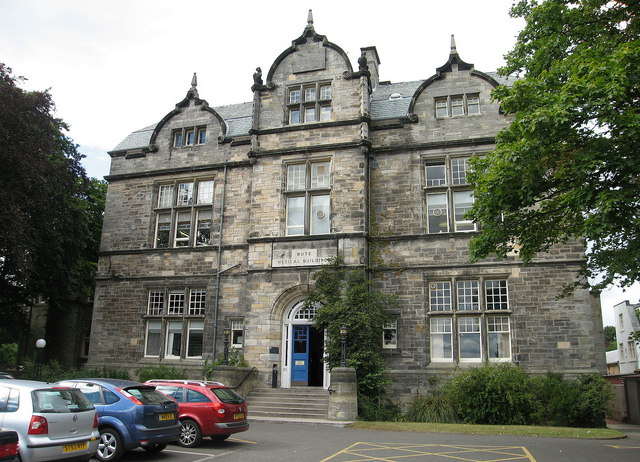
Our laboratory is in the Bute Medical Sciences Building in St Mary’s Quad, off of South St in St Andrews in Scotland. The building was built between 1897-1899 as the medical school for the university, but was repurposed after a larger medical school was needed.
The facilities in the labs include areas to raise tadpoles at different temperatures, to make instruments for dissection, to take videos of tadpole behaviour, to prepare and mount brains on microscope slides, to wash glassware and stations to record electrical activity in the tadpole nervous systems. There is also a frog room where female and male frogs are induced to mate, so there is a steady supply of tadpoles to be studied in the lab.
The Scientists
The lab is headed by Dr Wenchang Li and Prof Keith Sillar.

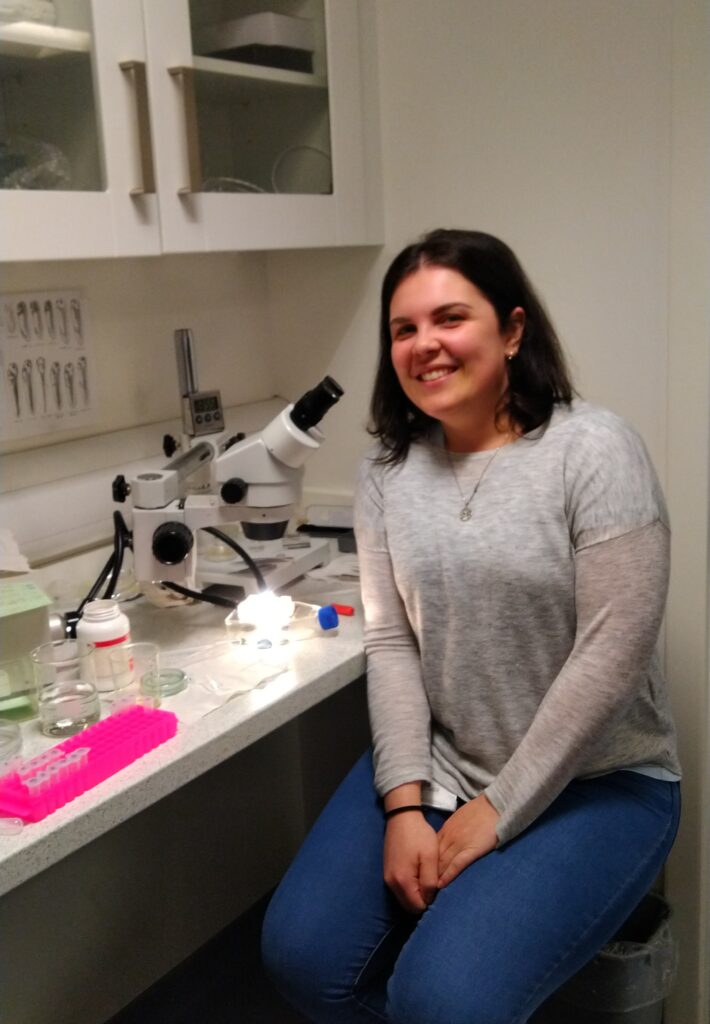


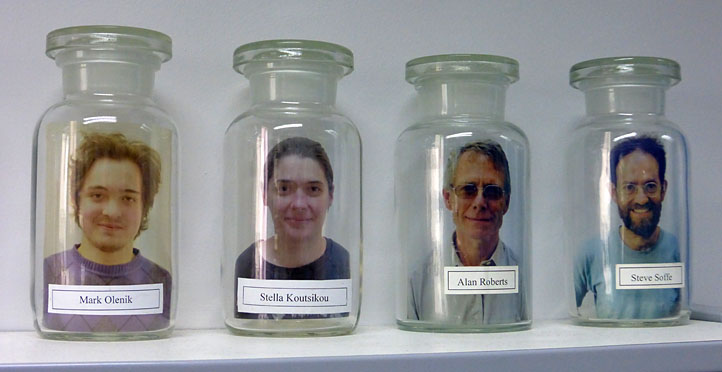
Here are some of the researchers from the Bristol lab. Unfortunately, the lab is now closed due to the retirement of the head researchers Dr Steve Soffe and Prof Alan Roberts.
Dr Stella Koutsikou now is a senior lecturer in the University of Kent.
Mark Olenik is now working at Leibniz Institute on Aging.
The Frogs and Tadpoles
The tadpoles we study are produced by a small colony of adult Xenopus laevis looked after by the University Animal Services Unit. Animal research is strictly regulated by the UK Home Office under the Animals (Scientific Procedures) Act 1986. Universities carrying out animal researches are subject to frequent inspections by the UK Home Office who examines all aspects of animal research, care and welfare. The local Animal Welfare Ethics Review Body (AWERB) offers on-going support and guidance to researchers on best practice for animal involvement, welfare and refinement.
Below is a picture of one of the rank systems we use, which contain tanks which house toads in a carefully controlled environment.
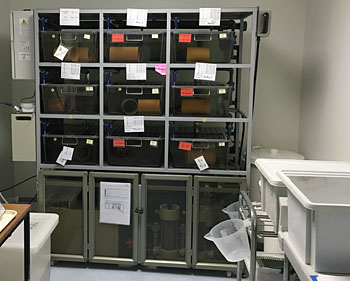
Twice a week, mating is induced by injecting a pair of adults with the hormone human chorionic gonadotropin in the late afternoon. If all goes well, the pair are clasped and eggs (about 1 mm across) have been laid by next morning. The frogs have identity reference numbers and the number and quality of their eggs, as well as their weight is tracked. The data are used to determine which frogs mate best together.
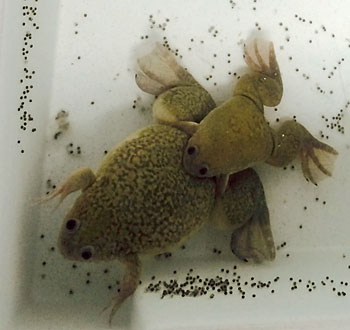
The fertilised eggs stick to the sides or bottom of the tank. We collect the eggs and take them to the lab to grow into tadpoles. Find out more on our Tadpole Laboratory page.

